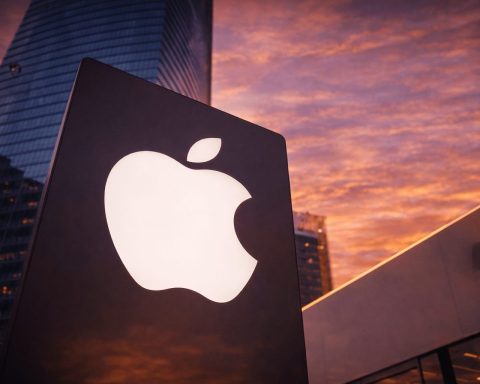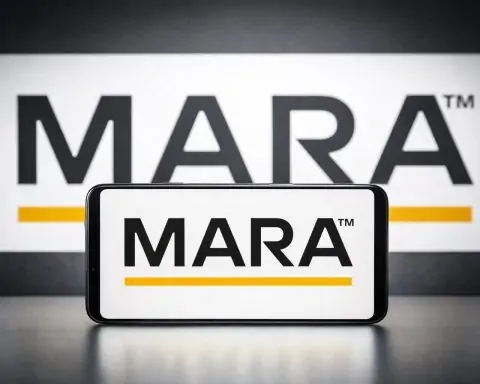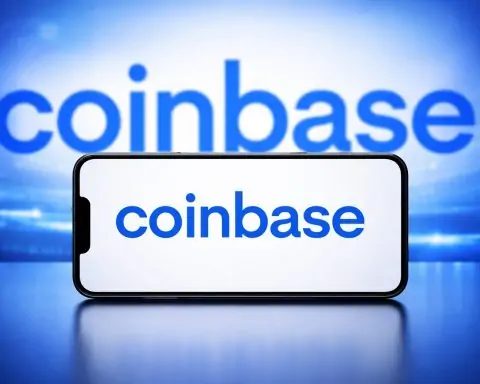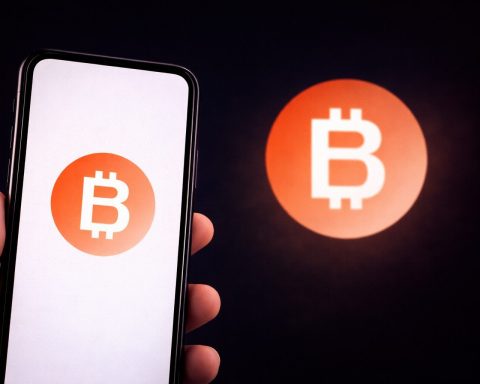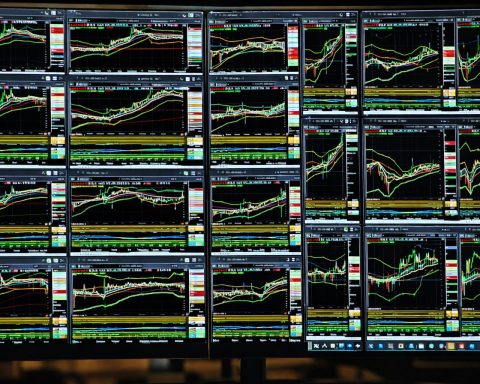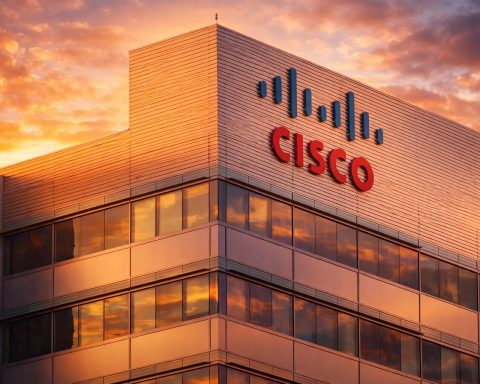- AOL will discontinue its Dial-up Internet service on September 30, 2025 after a 34-year run.
- AOL will retire the AOL Dialer software and the AOL Shield browser, both optimized for older operating systems, alongside the dial-up shutdown.
- Marks & Spencer relaunched its online click-and-collect service on August 11, 2025 after a 15-week ransomware outage that began in late April, with four suspects linked to the DragonForce group arrested.
- The Cybersecurity and Infrastructure Security Agency ordered urgent patches for a Microsoft Exchange Server vulnerability that could enable total domain compromise, with federal agencies told to patch by August 11, 2025.
- Nvidia and AMD reportedly agreed to pay 15% of revenue from Chinese sales of cutting-edge GPUs, including Nvidia’s H20 AI chips, to the U.S. Treasury under new export-control measures.
- CATL halted operations at its Yichun lithium mine in Jiangxi after the mining license expired on August 9, 2025, with Yichun producing about 46,000 tons per year (roughly 3% of global supply) and lithium futures up about 8%.
- Reliance Jio Platforms activated 10 live 5G network slices nationwide, surpassed 200 million 5G subscribers in Q1 FY2026, and reported 7.4 million AirFiber fixed wireless customers.
- Telefonica said it will strip Huawei gear from its 5G core networks in Spain and Germany by 2025 to reduce exposure, while Latin American networks continue using Chinese equipment.
- Amazon’s Project Kuiper launch was scrubbed four times around Aug. 8–11 due to weather and technical issues, with SpaceX’s Falcon 9 mission KF-02 delayed and SpaceX aiming for a later window; SpaceX has logged its 100th mission of 2025 and 97th Falcon 9 flight.
- SoftBank and Yahoo Japan’s PayPay are lining up a U.S. IPO led by Goldman Sachs, JPMorgan, Mizuho, and Morgan Stanley that could raise over $2 billion in Q4 2025.
Consumer Tech & Electronics: End of an Era for AOL Dial-Up
AOL Disconnects Dial-Up for Good: A nostalgic chapter of internet history is closing. AOL, once synonymous with getting online, announced it will discontinue its dial-up internet service on September 30, 2025, after a 34-year run [1]. In a quiet statement on its website, the Yahoo-owned company said “AOL routinely evaluates its products and services and has decided to discontinue Dial-up Internet,” adding that the dial-up software and browser “will be discontinued” by end of September [2]. The decision marks the end of an era that introduced millions to the internet’s early days. Tech observers noted that while only a few hundred thousand users still cling to dial-up in the U.S., the move is symbolic of how far consumer connectivity has come. “34 years was a good run,” wrote The Verge, pointing out that even as recently as 2019, an estimated 265,000 Americans were still on dial-up [3]. The final shutdown serves as a reminder of the rapid evolution of consumer internet services from screeching modems to ubiquitous broadband.
Cybersecurity: Retailer Rebounds & Critical Patches
M&S Click-and-Collect Returns After Hack: In the UK, retail giant Marks & Spencer (M&S) has finally restored its online click-and-collect ordering system after a 15-week outage caused by a cyberattack [4]. The service had been down since late April when M&S was hit by a ransomware incident that forced the shutdown of ordering systems. The company resumed home delivery orders in June, but only on August 11 did it relaunch in-store pickup for fashion, home, and beauty products [5]. Investors reacted with relief – M&S shares rose about 1% on the news [6]. Investec analyst Kate Calvert said the resumption “is the key ‘back to normal’ signal from a consumer perspective” [7] after months of disruption. M&S previously estimated the hack could cost it £300 million in lost profit for the year [8] [9], though insurance and cost controls may soften the blow. Notably, police in Britain have already arrested four suspects believed linked to the DragonForce hacking group for attacks on M&S and other retailers [10] – a sign that the investigation is progressing as the company recovers.
“Total Domain” Threat Spurs Emergency Patch: Meanwhile, U.S. government cybersecurity officials spent the weekend scrambling to address a high-severity Microsoft Exchange Server vulnerability that could enable catastrophic breaches. In an emergency directive, the Cybersecurity and Infrastructure Security Agency (CISA) gave federal agencies until 9:00 AM on Monday, Aug. 11 to apply patches for the flaw, warning it could allow attackers to achieve “total domain compromise” if left unmitigated [11] [12]. The vulnerability affects hybrid Exchange email systems and was demonstrated at last week’s Black Hat security conference. While no active exploitation had been observed yet, CISA Acting Director Madhu Gottumukkala called the risk “significant, unacceptable” and urged all organizations – not just federal agencies – to patch immediately [13] [14]. Microsoft, which released fixes back in April, echoed the call, noting that an attacker with initial access on an Exchange server could escalate privileges and potentially wreak havoc across connected cloud services [15] [16]. The rush to patch underscores how critical software and operating system updates have become to plugging security holes – a theme that loomed large as the annual Black Hat and DEF CON conferences put a spotlight on both new threats and defenses in early August.
Software & Operating Systems: Pivotal Updates and Legacy Goodbyes
Exchange Flaw Forces Updates: For system administrators, the start of this week has been all about urgent updates. Microsoft Exchange, a core piece of enterprise software, received emergency attention due to the above-mentioned vulnerability. By Monday, Microsoft’s patches and guidance were in full focus, as IT teams applied fixes to prevent any exploitation of the flaw that CISA warned could imperil entire domains [17] [18]. This scramble comes just ahead of August’s regular Patch Tuesday cycle, reinforcing that critical fixes can’t always wait for scheduled releases.
Farewell to AOL Software: In a related sign of the times, AOL’s dial-up shutdown (noted in Consumer Tech) also means retiring the AOL Dialer software and the AOL Shield browser, which the company acknowledged were “optimized for older operating systems and dial-up internet connections” [19]. These applications, once staples of home computing, will sunset alongside the service. Tech historians note that the AOL Shield browser was one of the last mainstream browsers designed for Windows XP-era compatibility – its deprecation is a final nudge for any holdouts on obsolete operating systems to move on. In short, the software landscape this week is one of both urgent updates to modern platforms and bittersweet farewells to legacy applications that have outlived their era.
Hardware & Semiconductors: Chip Showdowns and Battery Blues
US–China Chip Tensions Escalate: High-stakes maneuvering over semiconductor technology made headlines. Over the weekend, it emerged that Nvidia and AMD have struck a highly unusual deal with the U.S. government regarding sales of their advanced chips to China. According to a U.S. official, the chipmakers agreed to hand over 15% of any revenue from Chinese sales of cutting-edge GPUs (such as Nvidia’s H20 AI chips) to the Treasury [20]. This arrangement comes after President Donald Trump’s administration had halted exports of those AI chips in April over security fears, only to partially reverse the ban in July [21] [22]. The retroactive “tax” on China sales is raising eyebrows in the industry. “It’s wild,” remarked Geoff Gertz of the Center for a New American Security, questioning the logic: “Either selling H20 chips to China is a national security risk, in which case we shouldn’t be doing it… or it’s not… why are we putting this extra penalty on the sale?” [23]. Nvidia, for its part, says it follows all U.S. rules and hasn’t shipped any H20 chips to China for months [24] [25]. The Financial Times first reported the revenue-sharing demand, and it underscores Washington’s tightening grip on high-end semiconductor exports – even as officials insist the resumed sales won’t compromise national security [26]. Beijing is clearly uneasy: on Sunday, a social media account affiliated with China’s state broadcaster CCTV lambasted Nvidia’s H20 chips as neither advanced nor secure. “When a type of chip is neither environmentally friendly, nor advanced, nor safe, as consumers, we certainly have the option not to buy it,” the state-affiliated article concluded pointedly [27]. It even accused Nvidia’s hardware of having hidden “backdoor” capabilities for remote shutdown [28] [29] – a claim the company vehemently denies. This war of words highlights the growing tech rift: China signaling it may shun American chips on security grounds, while the U.S. imposes unprecedented financial strings on chip sales to its rival.
CATL Halts Lithium Mine, Prices Jump: In related hardware supply chain news, Chinese battery giant Contemporary Amperex Technology (CATL) has suspended operations at a major lithium mine in Jiangxi province – a move that rattled commodities markets. CATL revealed on August 11 that the mining license for its Yichun lithium project expired on Aug. 9 and has not yet been renewed [30] [31]. The company said it is working with authorities to renew the license “as soon as possible”, and will resume output once approved [32] [33]. Yichun is a key source of lithium (producing about 46,000 tons annually, roughly 3% of global supply) used in EV batteries [34]. News of the shutdown sent lithium carbonate futures in Guangzhou surging 8% (hitting their limit-up price) and lifted lithium mining stocks over 10% in both China and Australia [35] [36]. Investors interpreted the halt as part of Beijing’s broader crackdown on overcapacity and environmental infractions in the mining sector [37]. With lithium prices already volatile, CATL’s pause – the first publicized closure in the “Lithium Capital” of Yichun – is amplifying concerns about supply tightness. Analysts note that if the issue isn’t resolved swiftly, global EV manufacturers could feel the pinch in higher battery costs. CATL has assured that it’s moving to renew permits quickly, but the incident underscores how critical raw material licensing and regulation have become to the semiconductor and battery industries alike.
Telecommunications: 5G Milestones and Network Shuffles
5G Rollouts Continue Worldwide: While no singular bombshell hit telecom on these dates, the global march of 5G kept pace with notable developments. In India, Reliance Jio’s parent Jio Platforms announced it has activated 10 live 5G network slices nationwide to support diverse applications from IoT to gaming [38] [39]. This makes Jio one of the first operators globally to deliver at-scale network slicing – a cutting-edge 5G capability that creates virtual sub-networks optimized for specific uses. The achievement comes as Jio’s 5G user base surged past 200 million subscribers in the first quarter of FY2026 [40] [41], solidifying India’s position as one of the fastest-growing 5G markets. Jio also revealed that its fixed wireless access service (branded AirFiber) has reached 7.4 million customers, reportedly making it the world’s largest home 5G broadband offering [42] [43]. These numbers highlight intense demand for wireless data in emerging markets.
Telecom Gear Shake-ups: In Europe, the ongoing phase-out of Chinese equipment continued behind the scenes. Industry chatter picked up on Telefonica’s previously announced plan to strip Huawei gear from its 5G core networks in Spain and Germany by 2025 [44] [45]. While this initiative was disclosed in late July, its ramifications are unfolding now as carriers swap vendors to comply with government security mandates. Telefonica’s COO Emilio Gayo noted the company is “reducing our exposure to Huawei” in those countries in line with local rules, even as its Latin American networks continue using Chinese kit where no bans exist [46] [47]. The effort is mirrored by other European operators amid broader Western scrutiny of telecom supply chains. Taken together, the telecom sector in mid-August 2025 is characterized by rapid 5G adoption on one hand and careful re-evaluation of network infrastructure trust on the other.
Space & Satellite Tech: Starlink Rival Launch Delayed
Amazon’s Kuiper Satellites Scrubbed by Weather: In the skies, an ambitious satellite-internet project hit a temporary speed bump. Amazon’s Project Kuiper, a planned mega-constellation to rival SpaceX’s Starlink, was set to launch 24 new satellites over the weekend – but SpaceX’s Falcon 9 rocket was thwarted by technical glitches and bad weather four days in a row [48] [49]. After back-to-back scrubs on August 8 and 9 due to minor technical issues, the August 10 attempt in Florida was called off less than 30 seconds from liftoff when storms blew into the booster recovery zone [50] [51]. “We have no-go conditions on recovery weather… we will be standing down,” the launch director announced as heavy rain encroached the pad [52]. It was the fourth consecutive postponement for this mission, designated KF-02, which is carrying Amazon’s second batch of “Kuiper” broadband satellites. SpaceX immediately reset for Monday morning, Aug. 11, targeting an 8:35 AM ET window [53] [54]. The stakes were high: this launch marks SpaceX’s 100th mission of 2025 (and a record-breaking 97th Falcon 9 flight of the year) [55] [56]. It’s also pivotal for Amazon, which aims to deploy over 3,200 satellites in coming years to blanket the globe in internet service. As of the latest update, the weather outlook for Aug. 11 showed improvement, and SpaceX was “moderately” optimistic about recovering the booster at sea [57] [58]. Space enthusiasts worldwide tuned into the live webcast Monday as Elon Musk’s team attempted yet again to deliver Jeff Bezos’s satellites to orbit – a rare collaboration of fierce competitors. Whether or not liftoff succeeded on the 11th (early reports suggest it finally did, after a brief delay), the episode underscores the challenges of an increasingly crowded launch calendar. Even the might of SpaceX isn’t immune to Florida’s summer thunderstorms, especially when rocket reuse (and safe booster landing) is on the line. Beyond Kuiper, the period also saw NASA’s Crew-10 astronauts depart the ISS on Aug. 9, splashdowning safely on Aug. 10 in SpaceX’s Dragon capsule [59]. All told, it was a reminder that in space tech, patience and precision are as crucial as innovation.
Tech Business & M&A: Big IPOs and Deals Brewing
SoftBank Preps PayPay IPO: In tech business circles, a significant fintech offering is on the horizon. SoftBank has confidentially tapped a roster of top banks to take its payments app PayPay public in the U.S. [60]. Sources tell Reuters that Goldman Sachs, JPMorgan, Mizuho and Morgan Stanley are leading preparations for a potential PayPay IPO that could raise over $2 billion as early as Q4 2025 [61] [62]. PayPay, a Japanese mobile wallet venture jointly owned by SoftBank and Yahoo Japan, has boomed by incentivizing cash-loving Japanese consumers to embrace digital payments [63]. SoftBank’s decision to list PayPay in New York – its first major U.S. IPO since the blockbuster listing of Arm Holdings [64] – signals the conglomerate’s eagerness to unlock value from its portfolio. The timing aligns with a resurgence in tech IPO activity this year, albeit amid careful market conditions. Bankers caution that exact fundraising amounts and timing will depend on market sentiment, but insiders say SoftBank is aiming for a multibillion-dollar valuation and is targeting late 2025 if all goes well [65] [66]. The strategic move comes as SoftBank repositions after heavy investments in AI and startup bets: an IPO of a profitable payments unit could provide a welcome cash infusion. Market watchers will be keen to see if PayPay’s offering gains traction, as it could test investor appetite for high-growth fintech outside the U.S. and China. With SoftBank shares recently buoyed by tech market rallies, CEO Masayoshi Son appears ready to strike while the iron is hot.
Other Deal Rumblings: Mergers and acquisitions talk also peppered the news. In the media sector, reports emerged (on Aug. 8) that TV broadcaster Nexstar is in advanced discussions to acquire rival Tegna for around $8 billion [67] – a deal that would create a local television giant in the U.S. Though not yet sealed, this potential buyout (reviving a previously stalled merger) reflects renewed confidence in deal-making. And in India, Bloomberg reported that Reliance Industries is considering a scaled-down IPO of its telecom arm Jio Platforms, possibly selling ~5% to raise $6–7 billion [68] [69]. That move, if confirmed, would mirror this week’s SoftBank news in monetizing a digital services crown jewel. Finally, chip industry consolidation remains a theme: insiders note that Intel’s $5.4 billion takeover of Tower Semiconductor is approaching a crucial regulatory deadline later in August – a saga being closely watched after Chinese regulators delayed approval (a situation likely intertwined with the U.S.–China tech tensions). While no resolution hit by Aug. 11, any outcome there could send ripples through the semiconductor supply chain. Overall, the period of Aug. 10–11 showed renewed dynamism in tech finance, with companies positioning for growth and investors selectively opening checkbooks again after a cautious 2024.
Technology Policy & Regulation: White House vs. Big Tech CEOs
Intel CEO Summoned to Washington: The intersection of tech and politics took a dramatic turn as President Trump publicly clashed with Intel’s new chief executive, Lip-Bu Tan. On Aug. 10, Wall Street Journal reports (confirmed by Reuters) revealed that Tan was set to visit the White House on Monday (Aug. 11) for a face-to-face meeting with the President [70] [71]. The unusual meeting comes after Trump demanded Tan’s “immediate” resignation last week, calling the Malaysian-born executive “highly conflicted” over his past ties to Chinese tech firms [72]. This extraordinary call-out – a sitting U.S. president urging the firing of a private company’s CEO – stunned Silicon Valley and sparked debate on governmental overreach [73] [74]. Tan, who took the helm of Intel only in April, has significant investments in China (at least $200 million in Chinese chip startups, some linked to the military, per a Reuters investigation) [75] [76]. He also formerly led Cadence Design Systems, a chip-tool maker, until 2021 [77]. In response to Trump’s rebuke, Tan has struck a conciliatory tone. He “shared the president’s commitment to advancing U.S. national and economic security,” according to an Intel statement, and is expected to outline how Intel will bolster American chip manufacturing when he meets Trump [78] [79]. Insiders say Tan might propose new investments in U.S. fabs or safeguards to ease concerns about his loyalties. The episode underscores the current administration’s hardline stance on any perceived China influence in the tech sector. It also places Intel – a cornerstone of U.S. tech prowess – squarely in the political crosshairs. Analysts worry such interference could distract from Intel’s ongoing turnaround efforts. For now, all eyes are on Washington to see if Tan can satisfy Trump and keep his job. As one Washington think-tanker observed about the broader chip export drama, “trading away national security protections for revenue” would be a troubling precedent if true [80]. The outcome of these high-level discussions could shape how far the U.S. goes in leveraging corporate compliance for geopolitical goals.
Broader Regulatory Moves: Elsewhere, tech policy stories continued to unfold. China’s propaganda offensive against Nvidia’s H20 chips (mentioned earlier) dovetails with its push to gain concessions in the ongoing U.S.–China trade talks – Beijing reportedly wants curbs on AI chip exports relaxed as part of any deal. In Europe, data privacy enforcement made news as Australia’s privacy regulator sued Optus (the telecom firm) over a 2022 data breach, signaling growing global momentum in penalizing companies for hacks [81]. And in the crypto realm, while AI was persona non grata in this roundup, it’s worth noting U.S. regulators remain active: the White House’s crypto adviser, Bo Hines, announced his departure on Aug. 9, amid ongoing efforts to craft rules for digital assets [82]. Finally, a notable policy trend is the continued funding under the CHIPS Act – for instance, GlobalWafers confirmed it received a $200 million grant to expand silicon wafer production in Texas (news broke just before the weekend) [83]. This is part of the Biden-era (now Trump-continued) initiative to onshore critical semiconductor supply chains, illustrating rare continuity in tech policy across administrations. All told, mid-August 2025 finds tech policy in a balancing act: encouraging growth and innovation on one hand, while tightening oversight and national security guardrails on the other. The next steps – from how the Intel saga resolves, to whether chip export fees actually take effect – will be closely watched by both industry leaders and government officials worldwide [84] [85].
Sources: Ars Technica, The Verge, Wired, CNBC Tech, Bloomberg Technology, Reuters Tech and others for August 10–11, 2025. This report cites reputable outlets for each story to ensure accuracy and credibility.
References
1. www.theverge.com, 2. www.theverge.com, 3. www.theverge.com, 4. www.reuters.com, 5. www.reuters.com, 6. www.reuters.com, 7. www.reuters.com, 8. www.reuters.com, 9. www.reuters.com, 10. www.reuters.com, 11. federalnewsnetwork.com, 12. federalnewsnetwork.com, 13. federalnewsnetwork.com, 14. federalnewsnetwork.com, 15. federalnewsnetwork.com, 16. federalnewsnetwork.com, 17. federalnewsnetwork.com, 18. federalnewsnetwork.com, 19. www.theverge.com, 20. www.reuters.com, 21. www.reuters.com, 22. www.reuters.com, 23. www.reuters.com, 24. www.reuters.com, 25. www.reuters.com, 26. www.reuters.com, 27. www.reuters.com, 28. www.reuters.com, 29. www.reuters.com, 30. www.reuters.com, 31. www.reuters.com, 32. www.reuters.com, 33. www.reuters.com, 34. www.reuters.com, 35. www.reuters.com, 36. www.reuters.com, 37. www.reuters.com, 38. www.rcrwireless.com, 39. www.rcrwireless.com, 40. www.rcrwireless.com, 41. www.rcrwireless.com, 42. www.rcrwireless.com, 43. www.rcrwireless.com, 44. www.reuters.com, 45. www.reuters.com, 46. www.reuters.com, 47. www.reuters.com, 48. spaceflightnow.com, 49. spaceflightnow.com, 50. spaceflightnow.com, 51. spaceflightnow.com, 52. spaceflightnow.com, 53. spaceflightnow.com, 54. www.space.com, 55. www.space.com, 56. www.space.com, 57. spaceflightnow.com, 58. spaceflightnow.com, 59. www.reuters.com, 60. www.reuters.com, 61. www.reuters.com, 62. www.reuters.com, 63. www.reuters.com, 64. www.reuters.com, 65. www.reuters.com, 66. www.reuters.com, 67. www.reuters.com, 68. www.rcrwireless.com, 69. www.rcrwireless.com, 70. www.reuters.com, 71. www.reuters.com, 72. www.reuters.com, 73. www.reuters.com, 74. www.reuters.com, 75. www.reuters.com, 76. www.reuters.com, 77. www.reuters.com, 78. www.reuters.com, 79. www.reuters.com, 80. www.reuters.com, 81. www.reuters.com, 82. www.reuters.com, 83. www.reuters.com, 84. www.reuters.com, 85. www.reuters.com

